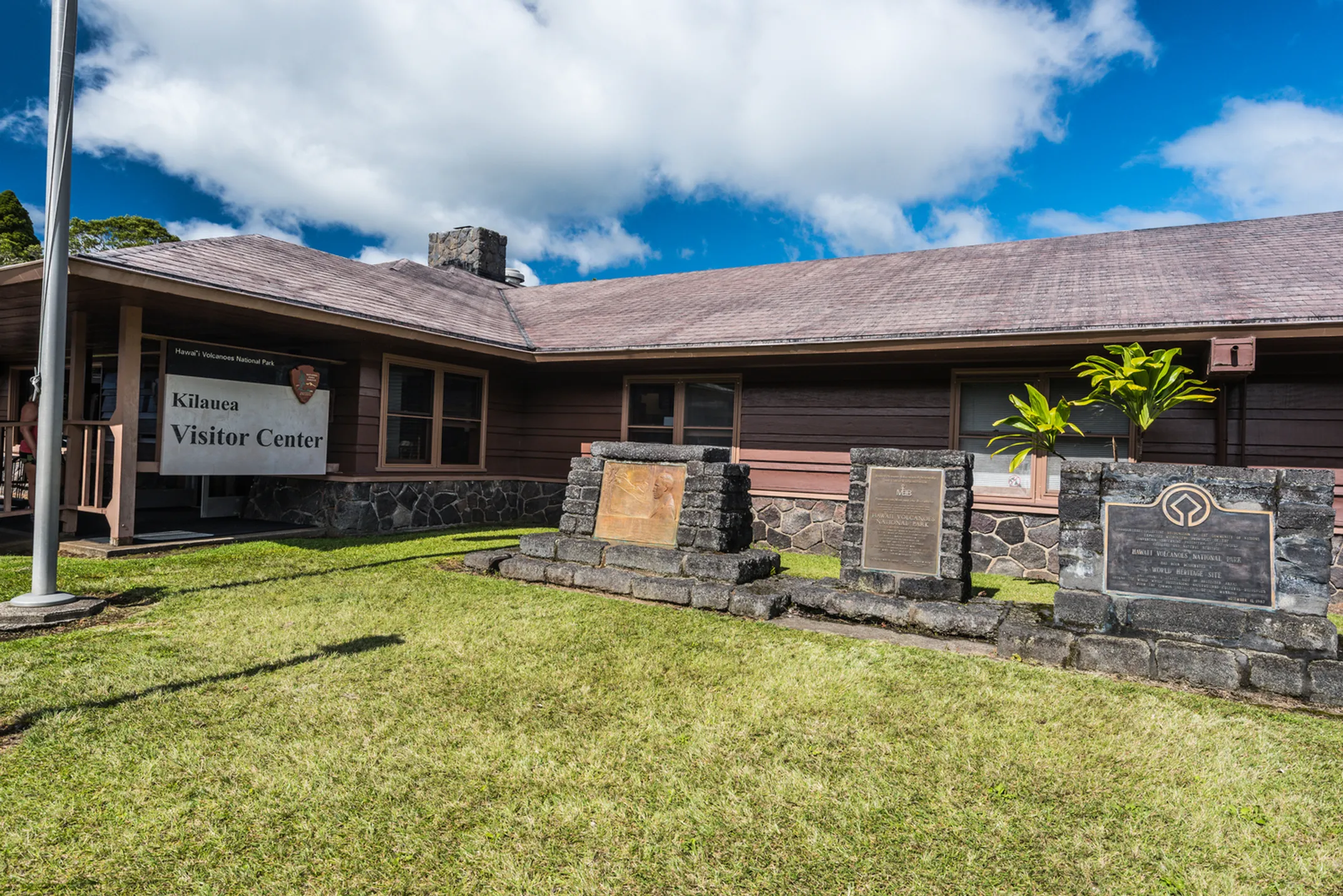

Scientists & Observatory
The keepers of knowledge who listen to the volcano's heartbeat

Written by a Cultural Expert
Leilani AkoThe Keepers of Knowledge: Scientists on the Summit
The same force that inspires artists also demands respect and understanding. Living on the edge of Kilauea means living with a powerful, unpredictable neighbor. This is where the other half of the village's soul lives: the scientists of the U.S. Geological Survey's Hawaiian Volcano Observatory (HVO). They aren't just researchers in a lab. They are neighbors, friends, and guardians whose job is to listen to the volcano's heartbeat.
The Hawaiian Volcano Observatory sits like a sentinel on the rim of Kilauea, its instruments constantly monitoring every tremor, every gas emission, every subtle change in the mountain's behavior. But the real heart of this operation lies in the village itself, where scientists live alongside artists and share the daily rhythms of this unique community.
What many visitors don't realize is how integrated the scientific community is with village life. These aren't distant researchers who helicopter in for data collection. They shop at the same small stores, attend the same community meetings, and send their children to the same schools. Their understanding of the volcano is enhanced by their deep connection to this place and its people.
Dr. Ken Hon – The Man Who Watches the Volcano
Leading this dedicated team is Dr. Ken Hon, the Scientist-in-Charge of HVO. His connection to Hawaii is long and deep. He first arrived in 1984, during Kilauea's longest modern eruption. His path was forever changed in 1990 when he witnessed lava flows destroy the coastal town of Kalapana. He describes it as a "very profound experience" that sparked his lifelong dedication to understanding volcanic hazards. After a distinguished career as a geology professor at the University of Hawaii at Hilo, he has returned to HVO to lead its critical mission.
Dr. Hon's story is one of scientific passion meeting personal calling. That moment in 1990, watching an entire community disappear under flowing lava, crystallized his understanding of why this work matters. It's not just about understanding geological processes—it's about protecting communities, preserving lives, and helping people make informed decisions about living with volcanic hazards.
Dr. Hon and his team are the modern interpreters of Pele's moods. They use incredible technology, including highly sensitive seismometers and GPS instruments that can detect ground movement down to a single millimeter. His role is to provide scientific direction, secure resources for his team, and keep the community informed. The observatory's real-time monitoring systems track earthquakes so small you can't feel them, measure gas emissions that might indicate changing conditions deep within the earth, and detect ground deformation that could signal an approaching eruption.
📊 Real-Time Monitoring
Advanced seismometers and GPS instruments detect ground movement down to a single millimeter and track the smallest earthquakes.
🌋 Gas Emissions
Continuous monitoring of volcanic gases that indicate changing conditions deep within the earth's core.
🔬 Global Research
Techniques developed here are used to monitor volcanic hazards globally, making Hawaii's research world-renowned.
🏘️ Community Integration
Scientists live as neighbors in the village, creating deep connections between research and community life.
Science Meets Spirituality
The technology is impressive, but what strikes me most about Dr. Hon is his deep respect for both the scientific method and the cultural significance of this place. He understands that for Native Hawaiians, Pele isn't just a geological force—she's a goddess, an ancestor, a living presence in the landscape. His approach honors both scientific rigor and cultural sensitivity.
Behind the world-class science is a person who feels the same awe for the volcano as any resident. He shares stories of the "collective groan" from his staff when an eruption was predicted to start on Christmas Eve. He speaks of the 2022 Mauna Loa eruption with wonder, describing its glow lighting up the night sky "like a giant lighthouse." Dr. Hon embodies the spirit of Volcano Village: a profound respect for the power of the land, coupled with an insatiable curiosity to understand it.
Living here means accepting uncertainty as a daily companion. Will the volcano erupt today? Next month? Next year? Dr. Hon and his team work to narrow those uncertainties, but they also help the community understand that some level of unpredictability is simply part of life on an active volcano. It's a lesson in humility that shapes everything about this place.
Living with Pele
Discover how science and spirituality come together in this unique community built on an active volcano.
🔬 HVO Facts
- Established: 1912
- Location: Kilauea rim
- Monitoring: 24/7/365
- Global Impact: Worldwide research
📡 Technology
- Seismometers
- GPS instruments
- Gas monitoring
- Thermal cameras
- Real-time data
📖 Complete Guide
The Storytellers and Dreamers
This unique environment has long been a muse. Writers like Mark Twain and Robert Louis Stevenson were drawn to the volcano's edge, capturing its sublime power in their words. Today, that tradition continues. The Volcano Writers Group provides a community for wordsmiths, while the National Parks Arts Foundation runs an artist-in-residence program that brings new creative voices to the park each year, ensuring that the story of this place is constantly being retold.
The literary tradition here runs deep. The combination of dramatic natural beauty, scientific wonder, and cultural richness provides endless inspiration for writers. Some focus on the geological drama unfolding beneath their feet. Others explore the human stories of people who choose to make their lives in such an extraordinary place. Still others delve into the rich cultural traditions that see this landscape as the home of Pele herself.
Writers Group
Regular meetings throughout the village, sharing works in progress and offering feedback in a supportive environment.
Artist Residency
National Parks Arts Foundation brings new creative voices to the park each year through their residency program.
Literary Legacy
Following in the footsteps of Mark Twain and Robert Louis Stevenson, who were drawn to the volcano's sublime power.
What strikes me about the writers here is how the landscape seeps into their work, even when they're not explicitly writing about volcanoes. The rhythm of their prose echoes the slow breathing of the earth. Their character development reflects the patience required to live with geological time. Their sense of place is informed by the knowledge that the ground beneath their feet is newer than they are, born from the same creative forces that continue to shape these islands.

